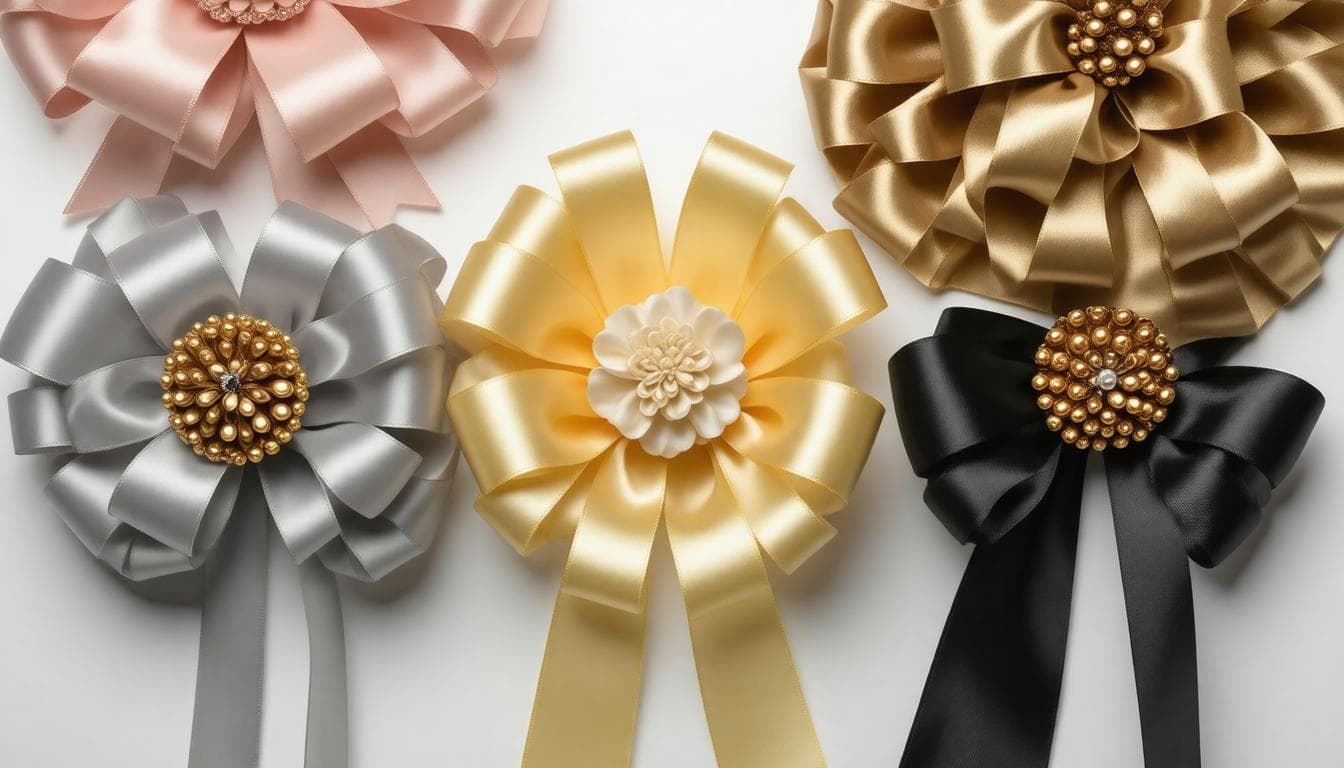What is a rosette?

Rosettes are more than just a decoration; they carry profound historical and cultural significance. At first glance, they may appear to be a simple flower-like shape, but their story stretches back to ancient civilizations, where they symbolized life, beauty, and artistic expression. Whether featured in architectural carvings, celebratory ribbons, pastry decorations, or military armament, the rosette has stood the test of time as a meaningful and elegant ornament. In this article, we’ll explore what defines a rosette, its various types, its symbolism, and its continued use as a cherished embellishment worldwide.
Definition of a Rosette
A rosette is a circular, stylized floral pattern inspired by the natural arrangement of petals or leaves radiating from a plant in its center. This symmetrical motif has been used for thousands of years as a decorative element in architecture, textiles, furniture, and ceremonial design.
In design, it typically features balanced, outward shapes that resemble blooming flowers. You may find a rosette sculpted into wood, printed on fabric, stitched through embroidery, or designed into ceiling medallions.
In architecture, rosettes serve as elegant features that add refinement to both classical and modern buildings. In décor, they appear in drapery, upholstery, and linens as a sophisticated adornment. Within award culture, they are used on medals and ceremonial ribbons to honor excellence.
The term “rosette” originated in France, from the French word rosette, meaning “little rose.” Today, the word is found in many languages, including English, illustrating the design’s global appreciation.
What Does a Rosette Symbolize?
Imagine a student being presented with a colorful rosette award ribbon at a school event. That ribbon represents more than recognition; it’s a sign of growth, success, and pride. For centuries, rosettes have signified honor and personal achievement across different cultures.
Like a blooming flower, a rosette is a symbol of progress and a testament to dedication. Whether awarded for academic achievements, community service, or creative endeavors, it marks significant accomplishments.
While some see them as decorative, others treasure rosettes as tokens of meaningful milestones. Their presence often evokes memories and emotional connection, especially in moments when achievement is celebrated tangibly.

Different Types of Rosette Ribbons
Rosette ribbons are available in a variety of styles, tailored for different events and preferences. The classic satin rosette offers timeless elegance and detail ideal for graduations, horse shows, and pageants. For casual or lively settings, such as festivals and school competitions, bold, printed rosettes add a colorful flair.
Some high-end versions feature multiple pleated layers, looped accents, or are crafted from luxurious materials like silk or velvet, making them ideal for galas or prestigious competitions.
Clean, minimalist rosette designs, such as single-color satin with minimal embellishment, are well-suited for corporate awards or formal ceremonies.
Selecting the right rosette style is like choosing an accessory: it enhances the presentation and complements the mood of the occasion. Consider the event’s tone, the recipient, and the desired impression.
What Is the Difference Between a Regular Award Ribbon and a Rosette Ribbon?
Consider receiving two awards, one a flat award ribbon, the other a carefully constructed rosette. A standard ribbon is typically a strip of printed fabric, often used at school or local competitions.
A rosette ribbon, however, adds a layer of artistry. Created by folding and shaping ribbon into a flower-inspired arrangement, these often include streamers, logos, and gold details. They’re designed to leave a lasting impression.
While standard ribbons are functional, rosettes elevate the presentation. They're visually distinct and carry a ceremonial feel; more than just recognition, they’re celebratory adornments with personality.
You might think of regular ribbons as a simple craft, while rosettes are well-crafted pieces made for meaningful display.
What Is the Best Way to Display a Rosette and Prevent It from Fading?
A well-earned rosette deserves to be seen—but also protected. While natural light can enhance its beauty, direct sun exposure can cause colors to fade and fabric to weaken.
The best way to preserve a rosette is to display it away from sunlight—in a shadowed box, display case, or on a shaded wall. This guards it against dust, moisture, and fading. Avoid placing it in high-humidity areas, as this can cause damage to the material over time.
Some use protective sprays designed explicitly for embroidery or textiles, but these can alter the finish and should be tested on a sample first.
Treat your rosette like a delicate pastry or vintage art handled with care, and it will retain its beauty for years to come.

Everything Else to Know About Rosettes
Creating a rosette involves intentional craft, from ribbon folding to selecting colors and textures. At a recent gala I attended, volunteers received gold-trimmed rosettes, and the presentation transformed the entire site into a celebration of appreciation.
Though they can be small in size, a rosette carries significant symbolic weight. They represent commitment, encouragement, and celebration. Whether displayed on a medal, a school ribbon, or a decorative pastry, their presence adds meaning.
Students often remember the number of rosettes they’ve earned over the years as a reflection of personal growth. One young girl once shared how her first science fair rosette gave her the confidence to pursue a career in engineering.
Even in a world of digital rewards, the tangible nature of a rosette makes it uniquely special, as it connects people to memories, milestones, and emotions.
Think of a rosette as a badge of effort, crafted from fabric, rooted in history, and worn with pride. Whether you find one in a museum, on stage, or atop a decorated cake, it speaks volumes.
Final Notes and Sources
This article was carefully written to provide information about the rosette and to help you understand its history and its diverse applications across cultures and industries. The content was compiled with insights from designers, educators, and trusted historical sources, then reviewed by professional editors for clarity.
Whether you're recognizing someone’s achievement, designing a display, or learning about decorative art or carving, we hope this guide enriches your account of the ever-versatile rosette.








